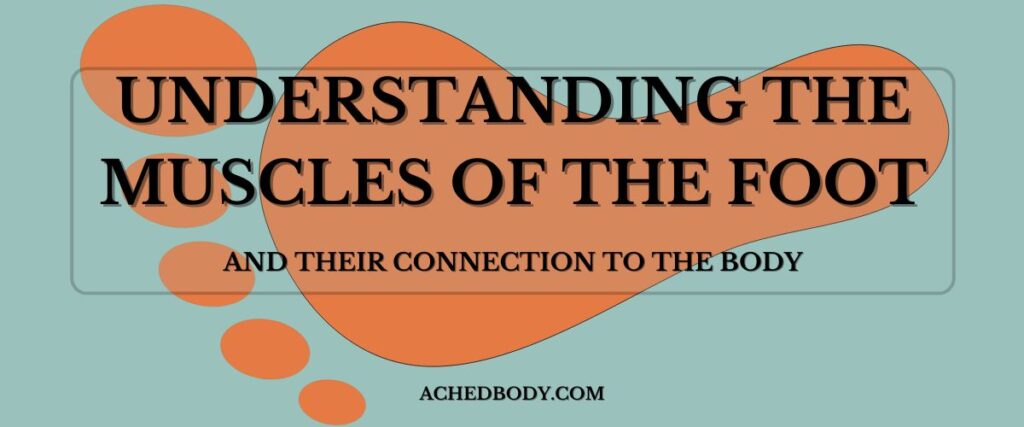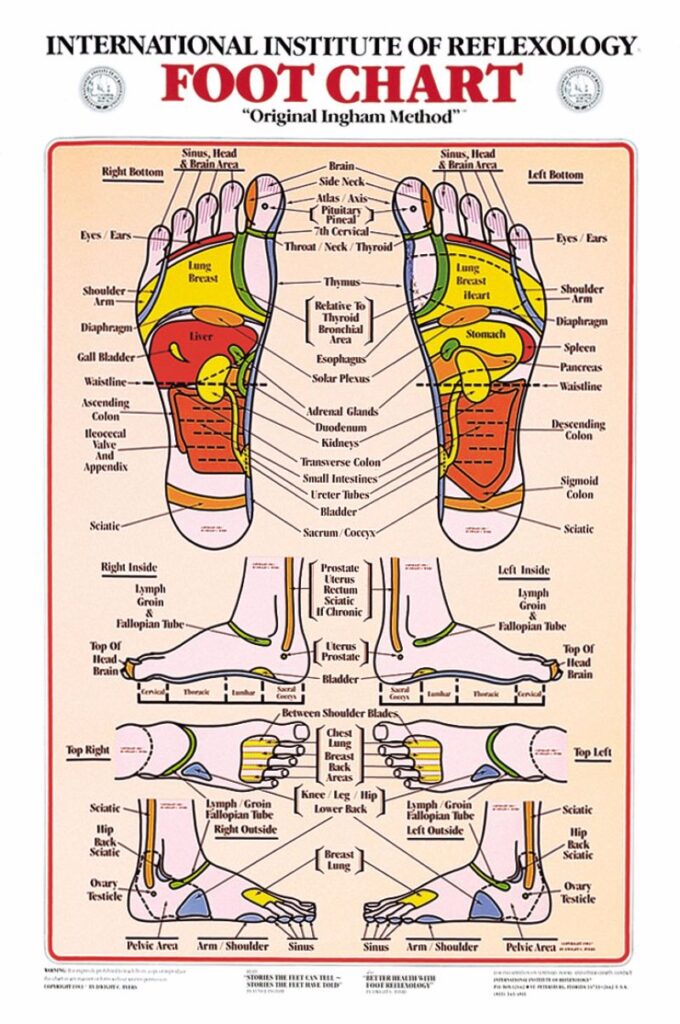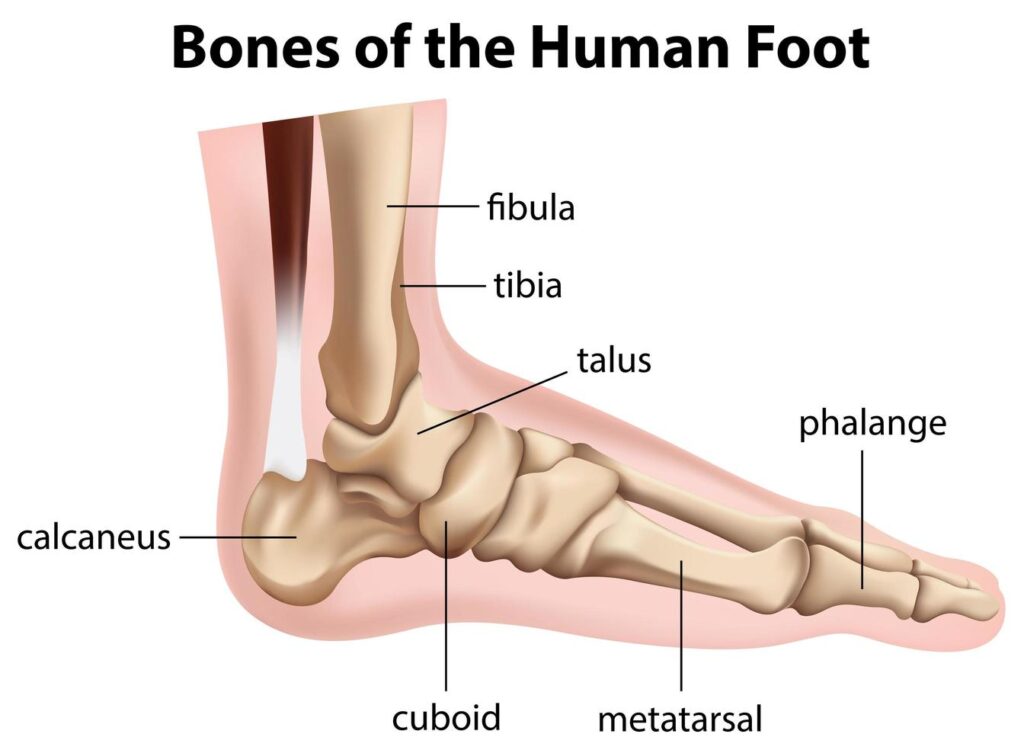

Muscles Of The Feet
Composed of 26 bones, 33 joints, and over 100 muscles, tendons, and ligaments, the foot serves as the foundation for movement and balance. Despite its complexity and importance, the foot often goes unnoticed—until something goes wrong.
This blog post explores the intricate network of muscles in the foot, their connections to the rest of the body, and how maintaining foot health can prevent systemic issues.
The Anatomy of the Foot
The foot’s muscles can be divided into two main groups:
1. Intrinsic Muscles: These are located entirely within the foot and are responsible for fine motor control, such as toe movement and maintaining balance. Some of the main players are:
- Flexor Digitorum Brevis: Flexes the middle phalanges of the toes.
- Abductor Hallucis: Moves the big toe away from the other toes.
- Lumbricals: Help stabilize the toes during walking.
2. Extrinsic Muscles: These originate in the lower leg and extend into the foot, providing strength and mobility. The main muscles in this group are:

- Tibialis Anterior: Dorsiflexes the foot, helping lift the toes off the ground.
- Gastrocnemius and Soleus (Calf Muscles): Connect via the Achilles tendon, aiding in plantarflexion (pointing the toes).
- Peroneus Longus: Supports the arch of the foot and aids in eversion (turning the foot outward).
The extrinsic muscles of the foot are usually not thought of as foot muscels because they make up the lower leg muscles, but these muscles work in harmony with the intrinsic foot muscles to allow walking, running, and maintaining balance.
However, any dysfunction in this system can create a ripple effect throughout the body.
Foot Problems and Their Systemic Effects
When the foot’s biomechanics are disrupted, it can lead to a chain reaction of issues. Common conditions such as plantar fasciitis, flat feet, or overpronation can alter gait patterns, placing undue stress on other parts of the body, including:
- Knees: Misaligned foot movements can cause the knee to rotate improperly, leading to joint pain and conditions like patellofemoral pain syndrome.
- Hips: Compensating for foot pain often results in uneven weight distribution, which can strain the hip muscles and joints.
- Lower Back: Poor foot mechanics can lead to an imbalanced pelvis, increasing the risk of lower back pain and sciatica.
A study published in the Journal of Foot and Ankle Research (2017) emphasizes the importance of addressing foot health to prevent cascading musculoskeletal problems.
Stretches to Reduce Pain and Plantar Fasciitis
Plantar fasciitis is one of the most common causes of foot pain, characterized by inflammation of the plantar fascia—a thick band of tissue that runs from the heel to the toes.
Incorporating some of these stretches or working through the Ultimate Guide to Stretching will alleviate a lot of your problems!
1. Calf Stretch (Gastrocnemius and Soleus)
- Stand facing a wall with one foot forward and the other extended behind you.
- Keep the back heel on the ground and lean forward, feeling the stretch in your calf.
- Hold for 20-30 seconds and switch sides.
2. Toe Stretch
- Sit on a chair and place your foot across your opposite thigh.
- Use your hand to gently pull your toes backward, stretching the plantar fascia.
- Hold for 15-20 seconds.
P.S. Check out the ultimate guide for detailed explanations and videos to go with it!
3. Kneeling Toe Curls
- Kneel down on your knees while curling your toes into a dorsi-flexed position
- Sit back on your heels for 10 seconds.
- Slowly increase the amount of time you spend sitting back to deepen the stretch
4. Rolling Massage
- Place a tennis ball or a frozen water bottle under your foot.
- Roll it back and forth from the ball of your foot to your heel, applying moderate pressure.
- Continue for 1-2 minutes per foot.
5. Arch Stretch
- Stand on the edge of a step with the balls of your feet firmly planted.
- Slowly lower your heels below the step to stretch the arches and Achilles tendon.
- Hold for 15-30 seconds.
5.2 Arch Stretch
- Use a slant board to curl your toes upward
- lean your knee forward to increase the tension through the calf and plantar fascia
- consider leaning from side to side as well to stretch other fiber directions!
The muscles of the foot are vital not only for local function but for the health of the entire body. Addressing foot pain through stretches, strengthening exercises, and proper footwear can prevent a cascade of systemic problems.
Prioritizing foot health with stretching and trigger pointing will build the foundation for your body and enhance your life.
I can’t wait to hear from you below! If you need anything, don’t hesitate to reach out! I will personally respond and help you through your problem!
-Nick